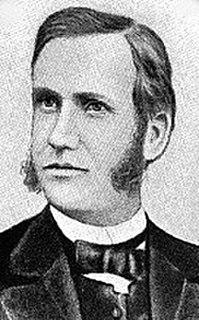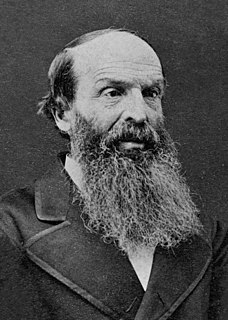
Walla Walla County is a county located in the U.S. state of Washington. As of the 2010 census, its population was 58,781. The county seat and largest city is Walla Walla. The county was formed on April 25, 1854 and is named after the Walla Walla tribe of Native Americans.

Asotin County is a county in the U.S. state of Washington. As of the 2010 census, the population was 21,623. The county seat is at Asotin, and its largest city is Clarkston. The county was created out of Garfield County in 1883 and derives its name from a Nez Perce word meaning "Eel Creek".

Walla Walla is the largest city and the county seat of Walla Walla County, Washington, United States.

Whitman College is a private liberal arts college in Walla Walla, Washington. Founded as a seminary by a territorial legislative charter in 1859, the school became a four-year degree-granting institution and abandoned its religious affiliation in 1882 and 1907, respectively. It is accredited by the Northwest Association of Schools and Colleges and competes athletically in the NCAA Division III Northwest Conference. The school offers 48 majors and 33 minors in the liberal arts and sciences, and it has a student-to-faculty ratio of 9:1. Whitman was the first college in the Pacific Northwest to install a Phi Beta Kappa chapter, and the first in the U.S. to require comprehensive exams for graduation.Alumni have received 1 Nobel prize in physics, 5 Rhodes Scholarships, 62 Fulbright Fellowships, and 12 Watson Fellowships.

Marcus Whitman was an American physician. In 1836, Marcus Whitman led an overland party by wagon to the West. He and his wife, Narcissa, along with Reverend Henry Spalding and his wife, Eliza, and William Gray, founded a mission at present day Walla Walla, Washington in an effort to convert local Indians to Christianity. In the winter of 1842 Whitman returned east, returning the following summer with the first large wagon train across the Oregon Trail. The new settlers encroached on the Cayuse Indians living near the Whitman Mission and were unsuccessful in their efforts to Christianize the Tribe. Following the deaths of many nearby Cayuse from an outbreak of measles, some remaining Cayuse accused Whitman of murder, suggesting that he had administered poison and was a failed shaman. In retaliation, a group of Cayuse killed the Whitmans and twelve other settlers on November 30, 1847, an event that came to be known as the Whitman Massacre. Continuing warfare between settlers and Indians reduced the Cayuse numbers further.

The Whitman massacre was the murder of Washington missionaries Marcus Whitman and his wife Narcissa, along with eleven others, on November 30th, 1847. They were killed by members of the Cayuse tribe who accused him of having poisoned 200 Cayuse in his medical care. The incident began the Cayuse War. It took place in southeastern Washington state near the town of Walla Walla, Washington and was one of the most notorious episodes in the U.S. settlement of the Pacific Northwest. Whitman had helped lead the first wagon train to cross Oregon's Blue Mountains and reach the Columbia River via the Oregon Trail, and this incident was the climax of several years of complex interaction between him and the local Indians. The story of the massacre shocked the United States Congress into action concerning the future territorial status of the Oregon Country, and the Oregon Territory was established on August 14, 1848.

Fort Walla Walla is a United States Army fort located in Walla Walla, Washington. The first Fort Walla Walla was established July 1856, by Lieutenant Colonel Edward Steptoe, 9th Infantry Regiment. A second Fort Walla Walla was occupied September 23, 1856. The third and permanent military Fort Walla Walla was built in 1858 and adjoined Steptoeville, now Walla Walla, Washington, a community that had grown up around the second fort. An Executive Order on May 7, 1859 declared the fort a military reservation containing 640 acres devoted to military purposes and a further 640 acres each of hay and timber reserves. On September 28, 1910 soldiers from the 1st Cavalry lowered the flag closing the fort. In 1917, the fort briefly reopened to train men of the First Battalion Washington Field Artillery in support of action in World War I. In 1921, the fort and property were turned over to the Veterans Administration where 15 original buildings from the military era remain. Today, the complex contains a park, a museum, and the Jonathan M. Wainright Memorial VA Medical Center.

Whitman Mission National Historic Site is a United States National Historic Site located just west of Walla Walla, Washington, at the site of the former Whitman Mission at Waiilatpu. On November 29, 1847, Dr. Marcus Whitman, his wife Narcissa Whitman, and 11 others were slain by Native Americans of the Cayuse. The site commemorates the Whitmans, their role in establishing the Oregon Trail, and the challenges encountered when two cultures meet.

Henry Harmon Spalding (1803–1874), and his wife Eliza Hart Spalding (1807–1851) were prominent Presbyterian missionaries and educators working primarily with the Nez Perce in the U.S. Pacific Northwest. The Spaldings and their fellow missionaries were among the earliest Americans to travel across the western plains, through the Rocky Mountains and into the lands of the Pacific Northwest to their religious missions in what would become the states of Idaho and Washington. Their missionary party of five, including Marcus Whitman and his wife Narcissa and William H. Gray, joined with a group of fur traders to create the first wagon train along the Oregon Trail.

Narcissa Prentiss Whitman was an American missionary in the Oregon Country of what would become the state of Washington. On their way to found the Protestant Whitman Mission in 1836 with her husband, Marcus, near modern-day Walla Walla, Washington, she and Eliza Hart Spalding became the first documented European-American women to cross the Rocky Mountains.

Mullan Road was the first wagon road to cross the Rocky Mountains to the Inland of the Pacific Northwest. It was built by U.S. Army troops under the command of Lt. John Mullan, between the spring of 1859 and summer 1860. It led from Fort Benton, which at the time was in the Dakota Territory, then Idaho Territory from July 1863, and Montana Territory beginning in May 1864, and the navigational head of the Missouri River. The road connected to Fort Walla Walla, Washington Territory, near the Columbia River. The road previewed the route approximately followed of modern-day Interstate 15 and Interstate 90 through present-day Montana, Idaho, and Washington.

David Belden Lyman was an early American missionary to Hawaii who opened a boarding school for Hawaiians. His wife Sarah Joiner Lyman (1805–1885) taught at the boarding school and kept an important journal. They had several notable descendants.

Frederick Schwartz Lyman was a surveyor, rancher, judge, and politician on Hawaiʻi Island.
Charles W. Slocum was a prominent American pioneer businessman active in the Pacific Northwest.

The Tshimakain Mission started in September 1838, with the arrival of Presbyterian missionaries Cushing and Myra Fairbanks Eells and Elkanah and Mary Richardson Walker to the area along Chamokane Creek at the community of Ford, Washington. Fort Colvile Chief Factor Archibald McDonald recommended the area to Eells and Walker on their first visit to the area.
Pierre-Chrysologue Pambrun was a French Canadian militia officer and later a fur trader in the service of the Hudson's Bay Company. Pambrun fought against the United States in the War of 1812, in particular the Battle of the Châteauguay. He joined the HBC during a time of turmoil with its competitors, the North West Company. After the Battle of Seven Oaks, he was among those held captive by men employed by the NWC.

Cushing Eells was an American Congregational church missionary, farmer and teacher on the Pacific coast of America in what are now the states of Oregon and Washington. His first mission in Washington State was unsuccessful. Eells and his family had to leave after the Native Americans massacred a group of neighboring missionaries. They spent the next fourteen years farming and teaching in Oregon, before returning to Washington, where Eells founded a seminary that later became the Whitman College. Eells continued to teach and preach in Washington for the remainder of his life.

Mary A(u)gusta Dix Gray or Mrs William H Gray was an early American missionary to Nez Perce people in the Oregon Territory in 1838. She was one of the first six European American women to cross the Rocky Mountains on what would become the Oregon Trail.

Richard Arthur Bogle was an American pioneer. He was born within the West India Islands in Jamaica on September 7, and he died on November 22, in Walla Walla, Washington Territory. He was known as the first African-American businessman in Walla Walla, Washington.


















